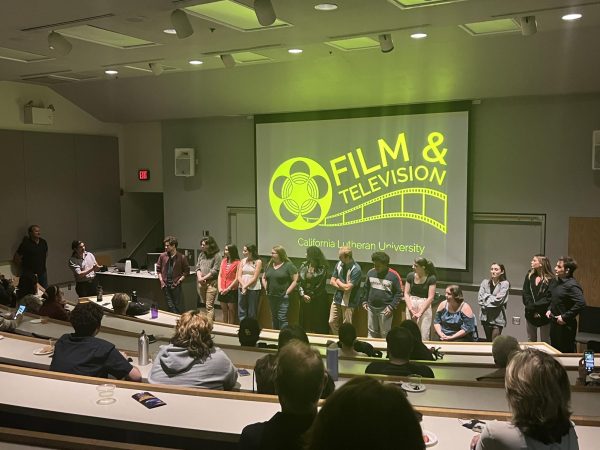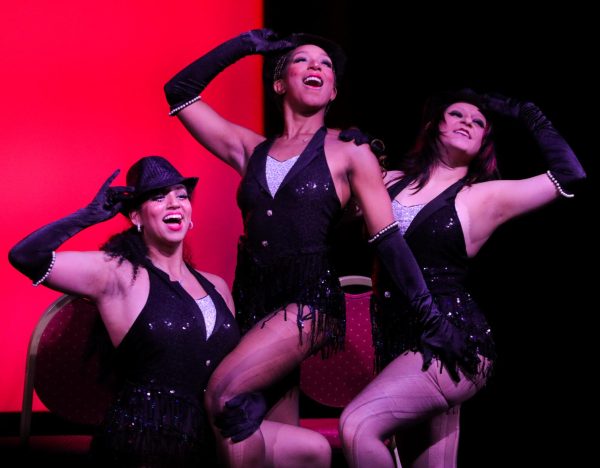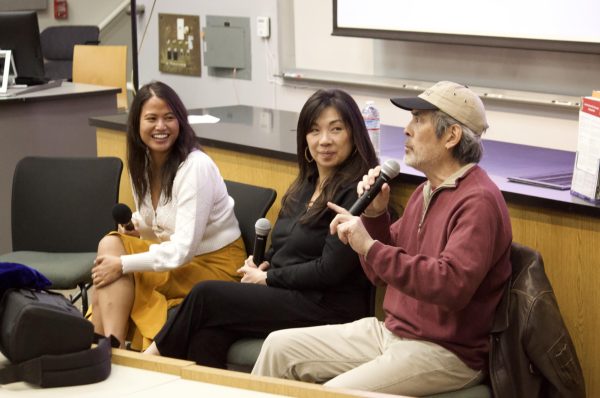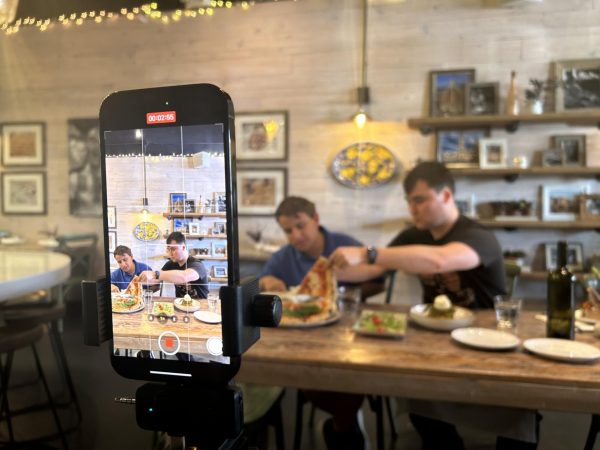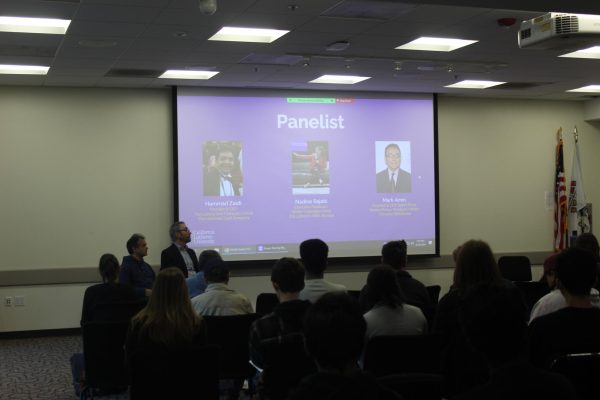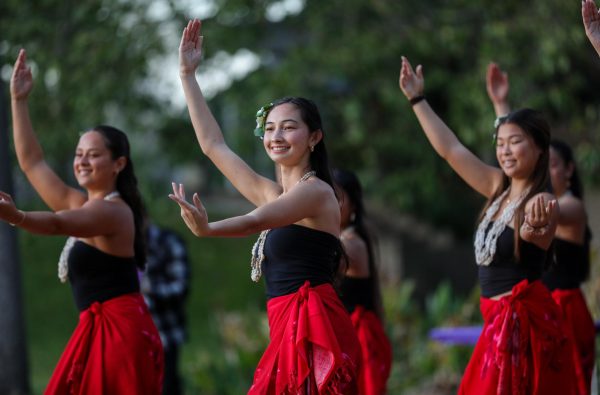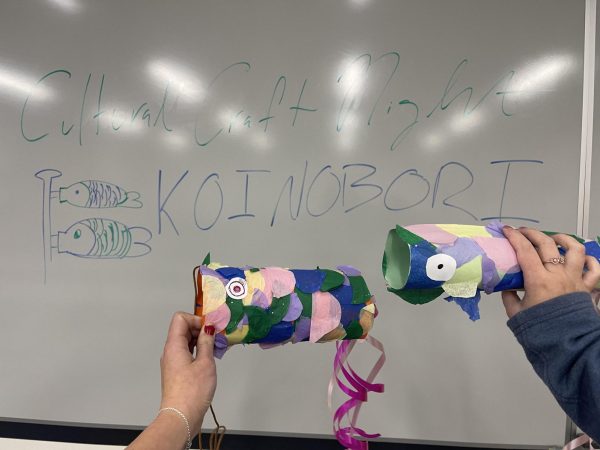AAPI Night Market celebrated with dancing, food
May 2, 2023
The Center for Cultural Engagement & Inclusion hosted the Asian American and Pacific Islander Night Market on April 27 at Kingsmen Park. The event offered a variety of food and drinks from Cafe Vietnam and Tim’s Thai Tea. Students had the opportunity to enjoy their food while watching dance performances from California Lutheran University’s FILO Club and the Kali martial arts demonstration from Tae Ryong Taekwondo.
Junior and CCEI programming intern Ally Macapagal, who helped plan the AAPI Night Market with the input of FILO club, said she wanted the event to give students more exposure to what Asian American Pacific Islander culture is.
“Besides the educational aspect, this type of event for Cal Lu to host is just fun. People can come together,” Macapagal said. “It’s just so important to have a community within a community, especially during a heritage month.”
Macapagal said she wants people to know that AAPI culture is more expansive than people may think. She said that it’s not just Japanese or Korean or Chinese culture, it’s also Southeast Asian and South Asian Cultures.
Noeloni Ramiscal, sophomore and president of FILO, said FILO and the CCEI aimed to highlight local Asian business owners as vendors at the event.
“I want people to know that there’s more than just fried rice in Asian foods,” Ramiscal said. “I think it was really nice that we got Vietnamese food and a large variety of desserts as well.”
Ramiscal said she tried the lemongrass chicken from Cafe Vietnam because she is trying to work on her spice tolerance.
“I gotta say, it did have a kick, but it was pretty good,” Ramiscal said. “The egg rolls are pretty good too.”
Students could choose either to have matcha, Thai Tea or halo-halo, a Filipino dessert.
Junior Jamie Bingaman, who visited the AAPI Night Market to support Macapagal, said she got to try an almond cookie, ube cupcake, beef brisket bowl, candy and mochi. She also said that making a paper lantern at the event was a fun and easy activity.
CCEI staff handed out raffle tickets to every person wFho made a paper lantern, for the chance to win a rice cooker, and additionally hosted AAPI Trivia using a spinning wheel of prizes.
“I am pleasantly surprised with the amount of food and desserts,” Bingaman said. “I like that the performers are very interactive. We got to participate. That was fun.”
Ramiscal said she wanted to participate in a couple of traditional Filipino partner dances as a part of FILO Club’s performance, but then she got injured. She said that luckily, FILO club was able to modify the performance into a one person dance due to a shortage of club member participants.
“I feel like when people think of cultural dances and Asian kind of culture, they think maybe like Chinese dancing, dragons dancing with giant masks,” Ramiscal said. “So I wanted to share that there’s other cultures with different backgrounds and their own type of dances as well.”
Ramiscal said that the first dance FILO club showcased was Itik-Itik, which translates to duck duck dance in Tagalog.
Ramiscal said, “It is mimicking the movement of a duck and how waddles and all that fun stuff that ducks do.”
The second dance was the Tinikling dance, named after what Filipinos colloquially call the Tiklin bird, which is formally known as the buff-branded rail bird. The dance is done by jumping between two sticks held close to the ground, which time with the music.
“The two sticks resemble the traps that were put out for the birds in order to prevent them from stealing rice,” Ramiscal said. “Avoiding the traps, the birds would weave in and out through the sticks.”
Ramiscal said the idea for the Tinikling dance to be a workshop that involved audience participation after an initial demonstration, not a full performance, by FILO Club’s founder and previous president, alum Terehna Soriano.
Bingaman, who joined in on the dance, said that it got even more difficult once the music started, since they had started off gradually by slowly practicing with the sticks at first.
“It was really fun,” Bingaman said. “It’s harder than it looks, for sure, but I’m very glad that I tried it.”
Ramiscal said that she has a friend who takes Kali classes at Tae Ryong Taekondo, so she asked her studio to do a demo at the night market.
Virgilio Ocampo, chief instructor for Tae Ryong Taekwondo in Thousand Oaks, said the studio performed Kali, a Filipino traditional martial art. He said the art is called different things depending on the province it is from and what the emphasis is, but Kali is the art of blade.
Ocampo said Kali is what inspired a lot of the Special Forces training, so it has been used in law enforcement for forever. He said even though the focus is combat, the same flow is what makes it friendly to anybody that wants to practice.
“It is a great self defense technique whenever anything happens,” Ocampo said. “It translates from stick, sword, knife, empty hand, it’s all the same motion. It’s efficient, whatever you learn with the stick that you just learned with the other three.”
Ocampo said he wanted to spread the awareness of Kali because it’s not that well known compared to other martial arts like karate, taekwondo and jujitsu.
Bingaman said that she thinks it is important that Cal Lutheran continues to host events like these.
“I think it’s really important for all of us students to learn about the different cultures and all the different food and everything,” Bingaman said. “We all really enjoy it. The more, the better.”
Macapagal said that last year was the first year that CCEI did the night market, and that compared to last year, it has grown exponentially. Still, she said that she wants it to grow even more.
“Asian hate, I feel like people really don’t understand how serious and impactful it is to the Asian American community,” Macapagal said. “Something positive like this event brings another image to people’s heads when they think of Asian culture.”



